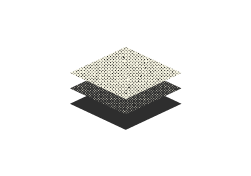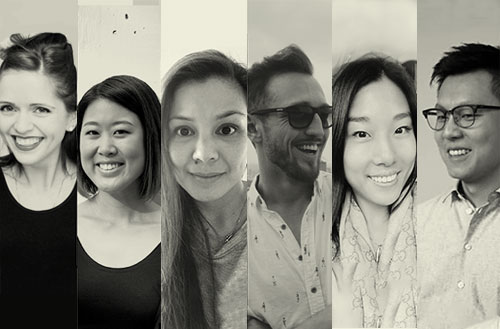
Create service
concepts together
Collaborative
Bring individuals together to work on a common goal during a workshop with hands-on tasks and discussions.
Concrete Outcomes
Produce tangible outcomes by using the different layers, rather than only creating flows or ideas.
Experience Driven
Create concepts driven by what you or your Personas want to do, rather than focusing too heavily on the mechanics of what the service will deliver.
Flexible
Open and easy to try several different concepts with interchangeable layers.
Team Building
Achieve a sense of shared ownership and responsibilities by building a service vision together.
Playful
A board game style that is fun and allows the creators to experiment and roam freely in their built environments.
"The Smart Living Sandbox was a fun and new way for us to work together. We used the Sandbox for simulating the smart living environment at Fortum and it was very useful in creating the environment to demonstrate the services we wanted to test out. It allowed us to discuss openly about decisions since it was a very open platform."
Maria Uhari-Pakkalin
Head of Customer Experience Design, Fortum Oyj

What's in the box
Environment tiles
Floor plans to simulate the physical environment.
tech enablers
Smart home appliances and personal devices that the Personas or residents can use.
cards
The different layers that can affect or enable Personas to act differently or define interactions.
canvases
A set of canvases helps users to document and frame the service concept.

How to play
The Service Sandbox can be used anywhere between 3 hours to a 2-day workshop depending on the requirements and you want to achieve.
Phase 1: Build
Define the kind of environment you are building.
Describe the type of resident (Persona) living in that home.
Add the personal devices for that resident. It can range from small devices such as a phone or computer to bikes and cars.
Add smart appliances.
Phase 2: Ideate
Pick themes to ideate around.
Create the resident’s values based on those themes.
Think about life situations where residents will most value a service.
Use sensors and detectors to prototype how technology can help deliver that value.
Clean up! Remove all assets that are not connected with your concept.
Enhance the experience by looking at the different ways of interaction with your customers and stakeholders.
Phase 3: Define
Define the service features.
Put the features on the Features Evaluation Canvas.
Place the features in an Experience Hierarchy Canvas and try to leverage the whole experience.
Use the other supportive canvases to bundle, then pitch it!
"We were searching for ways of including stakeholders and users in the process of creating or enhancing products and services in a natural, simple and accessible way. We found these and more in the Sandbox! It allows us to explore possibilities through a defined and consistent way. No doubt we would like to collaborate with the development of the tool for the Brazilian context."
Andrei Gurgel
Designer, @uxconfbr17

Explore the
possibilities
The Service Sandbox allows for many different possibilities. Whether you want to test an existing service, create new ones or just use it to work together with your colleagues. We have outlined some benefits and outcomes you can achieve with the Service Sandbox.
Improve existing services
Enhance or test digital services which are not succeeding in your physical context by using the Service Sandbox to gain new insights and different perspectives.
Develop new service concepts
Find the best solutions for your business and consumers by concentrating your efforts on the right issues. The Service Sandbox helps focus stakeholders' attentions and are designed to engage everyone involved.
Easy to scale
The environment tiles and Service Sandbox assets are easy to scale from big services to more intimate experiences. With the future development of expansion packs, you can extend your concepts to suit different contexts.
Localize
Places are inspired and influenced by their surroundings and local culture. Our community, ambassadors, and design researchers can help you to find what is important to consider in your service context of usage.
personal and flexible
The layers and environment tiles are easy to customise for your individual needs.
get the big picture
Having a simulation board helps you to maximise the possibilities of a place at one time. Imagine doing that in a real space!
Service Sandbox v2.0 is ready. Have fun and send us feedback.
Want a custom Sandbox—a personalised workshop or a printed version? Contact Jane Vita.
"It was the most and fast way I found to put everyone on the same page. Letting the service arise softly and fluidly as showcasing customer driven business opportunities. It's certainly a more engaging way to bring together diverse stakeholders to build more human-friendly scenarios and services."
Paulo Peres
design thinker, Horizon Consulting-collaborative

Want to know more?
The Service Sandbox initiative started with the goal of creating a co-creation tool that helps designers and other professionals to create better and more meaningful services in physical spaces. Since we can’t do it alone, we decided to share the knowledge and improve the methodology together with the community.
Feel free to download the tool and use in your daily work, but please keep us updated about the improvements and other suggestions. We want to make the great findings available for all.
If you are thinking about using the tool with your client or if you want to use it in your company, consider tailoring environment tiles and other assets. Needing help for that, contact Jane!
Jane vita, coordinator
Jane is greatly experienced in creating digital services for both physical and digital spaces. She has been involved in several workshops worldwide conducting co-creation sessions, such as The Meaning of Technology in Services and Hybrid Services, where she used the IoT Service Kit together with Maria Lumiaho her former colleague from Futurice in New York for Interaction 17. She has been tailoring these workshops along the way to create a more comprehensive tool that would focus on putting the experience at the core.
She continues to ensure that this initiative is alive and developed by anyone who wants to be involved or contribute to the Service Sandbox creation through proper instructions and tools.
More about Jane: LinkedIn
Other Collaborators
Service Sandbox is a unique toolkit and methodology developed by Jane Vita; since 2017. During these years, many brilliant minds have collaborated with Jane on bringing this unique toolkit to life.
Tatyana Chuzhanova, Karoline Kwon, Alexander Rodichev (First experiments), Eliana Sarpila (V1 Visual Design) Eileen Banting (Proofreading), Amy Lu & Jiaan Co (V2 - Visual Design).
Contact Us
Have questions, comments or feedback? Want us for a talk or workshop? Need custom tiles? Want to be an ambassador? Please write to us!



















